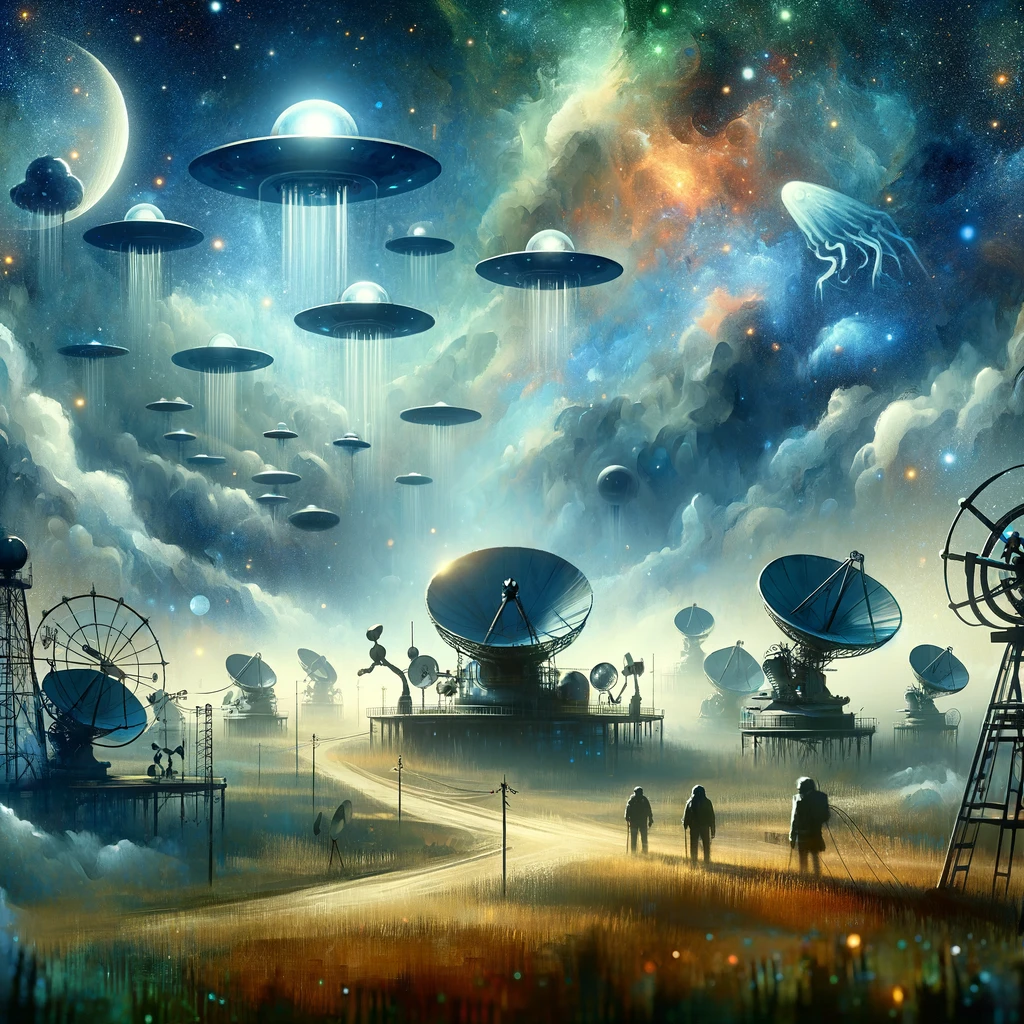Jacques Vallée at The Sol Foundation Symposium

In November 2023, Jacques Vallée, a renowned computer scientist, venture capitalist, and author known for his work on the UFO phenomenon, presented his insights at a symposium hosted by the Nolan Laboratory and the Stanford School of Medicine. This event, aimed at fostering academic legitimacy for Unidentified Aerial Phenomena (UAP) research, brought together experts from academia, government, and industry. The symposium, which spanned two days, was a platform for discussing the scientific aspects of UAP, their potential societal impacts, and the importance of responsibly sharing information on the subject. The Sol Foundation, a research institute dedicated to guiding scientific research on UAP, underscored the need for greater transparency and disclosure in this field through the symposium.
Vallée’s presentation highlighted the historical and ongoing challenges of studying UAP as a scientific problem with political issues. He reminisced about his early work at Stanford University, where he developed models related to cosmic phenomena, including UAP, and underscored the importance of distinguishing between explainable cases and those that remain genuinely unexplained. Vallée pointed out that a small percentage of unexplained cases could have significant implications, drawing an analogy to detecting enemy submarines during wartime, where even a small number of genuine sightings could pose a serious threat.
He also discussed the evolution of UAP research, noting improvements in data quality and analysis techniques. Vallée emphasized the importance of modern detection systems used by defense services, which have enhanced the ability to correlate UAP sightings with other data sources, thereby reducing the number of unexplained cases. However, he also highlighted the limitations of current analysis methods, which often overlook the most scientifically interesting cases due to their low report probability and high strangeness.
The science advisor mentioned in the presentation is Professor Jack Gibbons, who served as the Science Advisor to President Bill Clinton from 1993 to 1998. Gibbons was an astrophysicist and an expert in energy conservation, which contributed to his appointment in this prestigious role. During his tenure, he was involved in discussions about the UFO issue, notably when Lawrence Rockefeller, a prominent supporter of American science and environmental causes, suggested to President Clinton that the secrecy and stigma surrounding UFOs in the United States should be lifted.
The anecdote shared by Professor Jack Gibbons during a question-and-answer session revolves around an older man who encounters a talking frog. This story, while humorous, was used by Gibbons to metaphorically illustrate the complex and elusive nature of the UFO phenomenon in the United States. The older man’s decision to keep the frog as a curiosity rather than transforming it into a princess mirrors the approach of the U.S. government towards UFOs at the time. Rather than fully disclosing and exploring the phenomenon (the equivalent of transforming the frog into a princess), the preference was to maintain the status quo, keeping the UFO issue as an unresolved curiosity (the talking frog) without looking into potential complexities or revealing potentially unsettling truths. This reflects the political and scientific challenges in addressing the UFO phenomenon, highlighting the hesitance to fully engage with or disclose information about such unexplained occurrences.
Jacques Vallée shared a significant lesson about the importance of focusing on the unexplained minority of cases within the UFO phenomenon, often referred to as the 2%. This lesson was imparted to him by a retired army officer who had experience detecting German submarines during World War II. The officer pointed out that in his line of work, if 2% of the reported cases turned out to be German submarines, it was a matter of serious concern for national security, even if 98% of the sightings were explainable or false alarms.
Applying this perspective to UFO research, Vallée learned that while scientists and researchers might feel accomplished in explaining 98% of UFO sightings as mundane or identifiable phenomena, the truly significant part lies in the remaining 2% that cannot be explained. These unexplained cases potentially hold the key to understanding the phenomenon more deeply and could have profound implications.
This lesson taught Vallée the importance of not dismissing or overlooking the small percentage of cases that resist conventional explanation. Instead, these cases should be the focus of serious scientific investigation, as they may offer insights into novel phenomena or even new scientific principles. The lesson emphasizes the value of the unexplained as a gateway to discovery, rather than just an insignificant margin of error.
Vallée’s presentation included a statistical model to explain the reporting behavior of UAP sightings, suggesting that the most unusual and potentially informative cases are the least likely to be officially reported. He advocated for a broader research program that goes beyond physical performance and military threats to include life sciences and social realities, urging major countries to open their UAP files to the scientific community for a more comprehensive understanding of the phenomenon.


